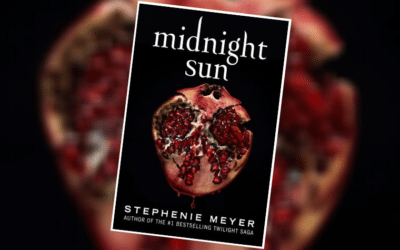And all of these women are women who work. And werk. They are mothers. They are at the top of their industries, and we probably all at least know OF them, if not own their books, watched their documentaries and know many details of their lives.
But what about everyone else? What about the women in science and tech that don’t have CEO behind their name? What about the military women? What about the ones who paved the way for Sheryl and Shondra and Katie? Who are they?
Today is International Women’s Day, and we asked our team to share some women you may not know, but we think you should!
Denise Scott Brown
Architecture is a male-driven field. There’s no getting around it. On a list of 25 Architects You Should Know, published by Complex, only 2 women are featured, one of whom is part of a husband/wife team. As a woman who works in the field of architecture, it’s pretty disheartening. I work as an interior designer and luckily my studio at work is all women with only one man, so we’re breaking the mold, but that’s not true of my firm as a whole. There’s no line in the bathroom, which is always nice as a woman, but other than that, the only benefit is that there’s a drive to work harder to stand out and prove you can do it just as well as your male counterparts.
A woman who has struggled against this wall for years is Denise Scott Brown, who partnered with her husband, architect Robert Venturi, started the architecture firm Venturi, Scott Brown & Associates in Philidelphia in 1980 – the couple who made it on that aforementioned list. Together the pair has taught, written books, and designed so many recognizable landmarks – the Sainsbury wing of the National Gallery in London, the Children’s Museum of Houston, the Seattle Art Museum, and the Museum of Contemporary Art in San Diego to name a few. Even if you don’t recognize their work, their postmodern philosophy and writings on urban sprawl and architecture in general have influenced countless works that you probably do recognize.

Denise has always been a trailblazer. She was one of five women in her class at architecture school and she was told “I am very sorry, but I can’t pay you as much as the men because the secretaries in my office would object if I did,” when applying for internships. She didn’t let that stop her. She even wrote an essay on it (read it, it’s amazing, insightful, and relevant, even almost thirty years after she wrote it). Controversy seemed to follow her, solely for the fact that she was a woman in a field that men didn’t think she should be in. In 1996, Venturi (her husband and lifelong business partner) was awarded the Pritzker Prize, the architectural equivalent to the Nobel Prize. Someone who was curiously missing from this nomination was Denise – the lifelong business partner, remember? Venturi questioned why she wasn’t included and was told that “it was not possible” for her to also get the award. I call bull on that. Because she’s a woman and also his wife (gasp!) the decision makers behind the Pritzker prize trivialized her role in their architectural findings.
Venturi accepted the award anyway, after discussion between the couple, to help their struggling architecture firm, and Denise didn’t attend the ceremony (smart move). Venturi was appropriately outraged and included Denise in his acceptance speech, emphasizing her importance in their work, as any good husband and business partner should. The issue isn’t with him, it’s architecture as a whole. In 2013, twenty-two years after this debacle, some bright-eyed architecture students at Harvard Graduate School for Design started up a petition to retroactively give this award to Denise as well. They got more than 8,000 signatures, included those of some incredibly famous architects, including Zaha Hadid, the only woman to ever actually win the Pritzker Prize (I almost wrote about her, but I’m hopeful that more people have heard of her work and now how amazing she is!). It didn’t end up working, but it’s a testament to Denise’s contributions to architecture that so many people supported this effort. She’s well-loved, and rightfully so. In 2017, at age 86, she received the Jane Drew award for innovation, diversity, and inclusiveness in architecture. I’d say it’s well deserved after a long career of fighting for room at the top.
There’s a million ways to be a woman. There’s a million ways to be a mother. And there’s a million ways to be an architect. – Denise Scott Brown
-Emily L
Cecilia Payne-Gaposchkin
My kids are currently obsessed with everything to do with outer space-planets, stars, galaxies. Ever heard a two year old try to say “nebula”? It’s the cutest thing in the world. So when choosing the woman to profile for the International Day of the Woman, I knew I wanted a female with a STEM career. Fate saved me from hours of researching, because a few days ago my cousin (herself a very successful chemist) shared a post of facebook about female astronomer Cecilia Payne-Gaposchki. What I learned about her was astonishing. Not only was she the first female professor at Harvard, but also the first woman to head an entire department there.
Born in England in 1900, she attended Cambridge College where her love for astronomy was formed. In those days Cambridge didn’t award degrees to women; you could complete your studies just like any other man, but sorry! Your vagina precluded you from actually receiving a degree. She emigrated to America and enrolled in Harvard’s graduate program, where she was the first student, male or female, to earn a PhD in Astronomy. Her thesis, which honestly I couldn’t understand in the slightest, managed to discover and prove the composition of stars. Fellow astronomers called it “undoubtedly the most brilliant PhD thesis ever written in the history of astronomy.”
Cecilia went on to achieve incredible career success, all for which she was paid obscenely less than her male counterparts. In her time as an astronomer she made over 3 million stellar observations of the galaxy, and still managed to have husband, three children, and teach Sunday School. She could also knit, sew, write poetry, and play the violin like a boss. I’m feeling like a massive underachiever right now.
In a world where women only make up 24% of the STEM workforce (according to a recent study), Cecilia is an inspiration for aspiring female scientists. She overcame prejudice, discrimination, and disheartening wage inequality to become a pioneer in the world of astronomy because she was passionate about it and would not be dissuaded from her path.
Young people, especially young women, often ask me for advice. Here it is, valeat quantum [literally “equivalent amount” in Latin, an idiom for “(let it be worth) as much as it is worth”]. Do not undertake a scientific career in quest of fame or money. There are easier and better ways to reach them. Undertake it only if nothing else will satisfy you; for nothing else is probably what you will receive. Your reward will be the widening of the horizon as you climb. And if you achieve that reward you will ask no other.-Cecilia Payne-Gaposchkin
-Janna
Terry Gross
She’s been around forever. Her voice is super familiar (if you’re a public radio listener, that is) and she has talked to EVERYONE. I mean, everyone.

Terry Gross is the host and co-producer of Fresh Air, a radio show produced at WHYY in Philadlephia (holla) and syndicated nation wide. She has been in her position for 42 years.
Gross has won praise over the years for her low-key and friendly yet often probing interview style and for the diversity of her guests. She has a reputation for researching her guests’ work largely the night before an interview, often asking them unexpected questions about their early careers
The San Francisco Chronicle wrote that Gross’ interviews are “a remarkable blend of empathy, warmth, genuine curiosity, and sharp intelligence.”
I have to admit, sometimes I think Terry asks questions that are not important. She misses opportunities for follow ups that make me yell audibly at my radio, but it is amazing how she gets people to open up and give a real, vulnerable interview in a way that no one else could.
Terry Gross is a badass radio journalist, and public radio, and entertainment, are better because of her.
-Bekah
Sheroes of the LGBTQIA Movement
Kate McKinnon is a rockstar and a comedy powerhouse and she does it with compassion. Something deeply inspiring about this lady is that she stared her career “out.” We’re still in a time where actors/actresses weight the potential damage that coming out may do to their career, but McKinnon’s choice to be brave symbolizes a new movement for me, where success isn’t contingent on your straightness. Additionally her talent is unquestionable: she scored a job with SNL at 28. That’s INSANE. It’s a notoriously hard gig to land and now she’s the first gay woman on the show. Seeing successful, funny and kind gay women is monumental for LGBT audiences, but it’s also incredibly important that straight audiences see these women too because it humanizes us.
Laverne Cox is an two time Emmy nominated actress and Emmy winning producer best know for her role on Orange is the New Black. To have not only a trans woman playing a trans character, but a trans woman of color on a hit show? That’s groundbreaking. Visibility matters and Laverne has bravely become one of the most well known trans and LGBT advocates of today. Rightfully called a “trailblazer” for her activism and speeches on the intersexuality of race, orientation and gender, she’s used her platform from OITNB to address inequality, racism and suicide.
(We can’t forget ELLEN!)
Emma González: She’s 18, she’s Cuban, she’s bisexual and she’s become the face of a national movement for gun control. After surviving the Parkland Shooting, Emma and fellow classmates became incredibly vocal, organizing rallies, showing up to town halls and calling out legislators for their lax gun policies. “We call BS” became their battle cry thanks to González and, while still grieving the loss of 17 classmates and educators, she’s pushing for change. We want to see America at its best and she symbolize that through eloquence, diversity, intelligence and compassion.
And all the leaders behind the me too movement – They rock. Dunno if they’re gay or not but they have definitely earned a spot
-Cassidy
Female Military Heroes
I have a couple of heroes in the military.
First, my MOTHER. She endured countless deployments during my Dad’s career as a Marine Corps officer…..8 kids, half a dozen moves — often across country — with enormous courage and dignity. I think that military wives, especially during my Mom’s generation are unsung heroes; my Dad deployed twice to VietNam, an incredibly unpopular war with none of the resources that we all have now. She’s an absolute STUD and showed me time and again, that not only CAN you do everything on your plate, you MUST do everything on your plate.

One of my other heroes, who I sadly have lost touch with over the last few years is Sandee Irwin Young. She was in the first class of women to attend the Naval Academy, and because of the alphabet, was the first woman to walk across the stage to receive her diploma. I met her about 13 years ago….I had just joined the US Navy Reserves and had no idea how to be an officer or a leader. Meeting her and getting to know her over a year or so was truly life altering for me. Nothing rattled her, she was thoughtful, organized, confident, empathetic, and apologetically ruthless when need be. I think she could sense that I felt uncomfortable and unsettled and the very best advice she EVER gave me….which I try to live by DAILY was this:
“You Belong Here”
It was declarative, aspirational, MONUMENTAL!
It’s my mantra, and 14 years later, I STILL TRY TO LIVE BY THIS and all because of some simple and gracious advice a trailblazer gave a young and nervous new friend.
YOU BELONG HERE: You are smart and capable.
Learn more about Sandee Irwin Young here.
ALSO: Her portrait is hanging in the Pentagon…..HUGE DEAL!
-Karen
Tell us about women we should all know about! Happy International Women’s Day!
Featured Photo by hannah grace on Unsplash




